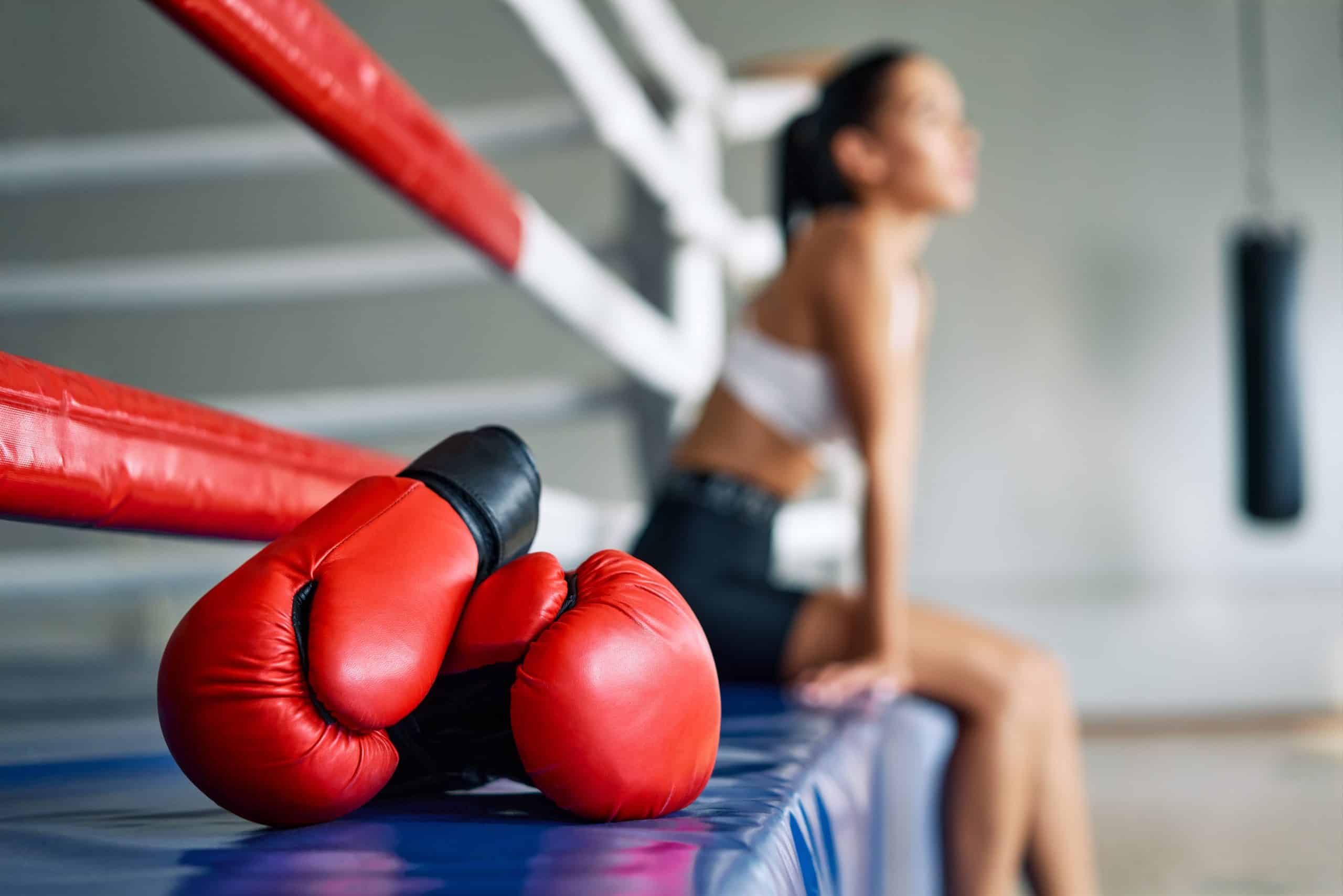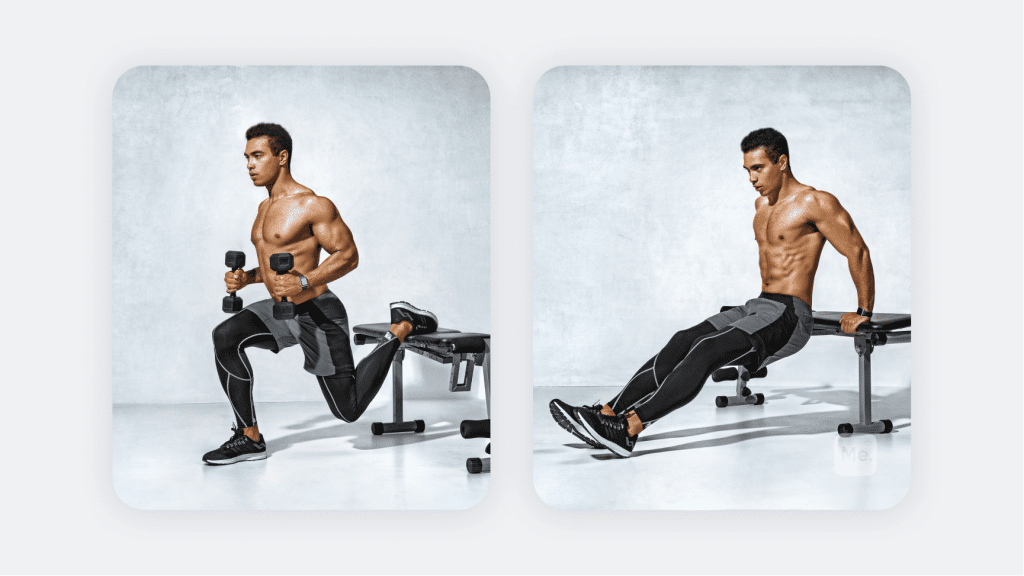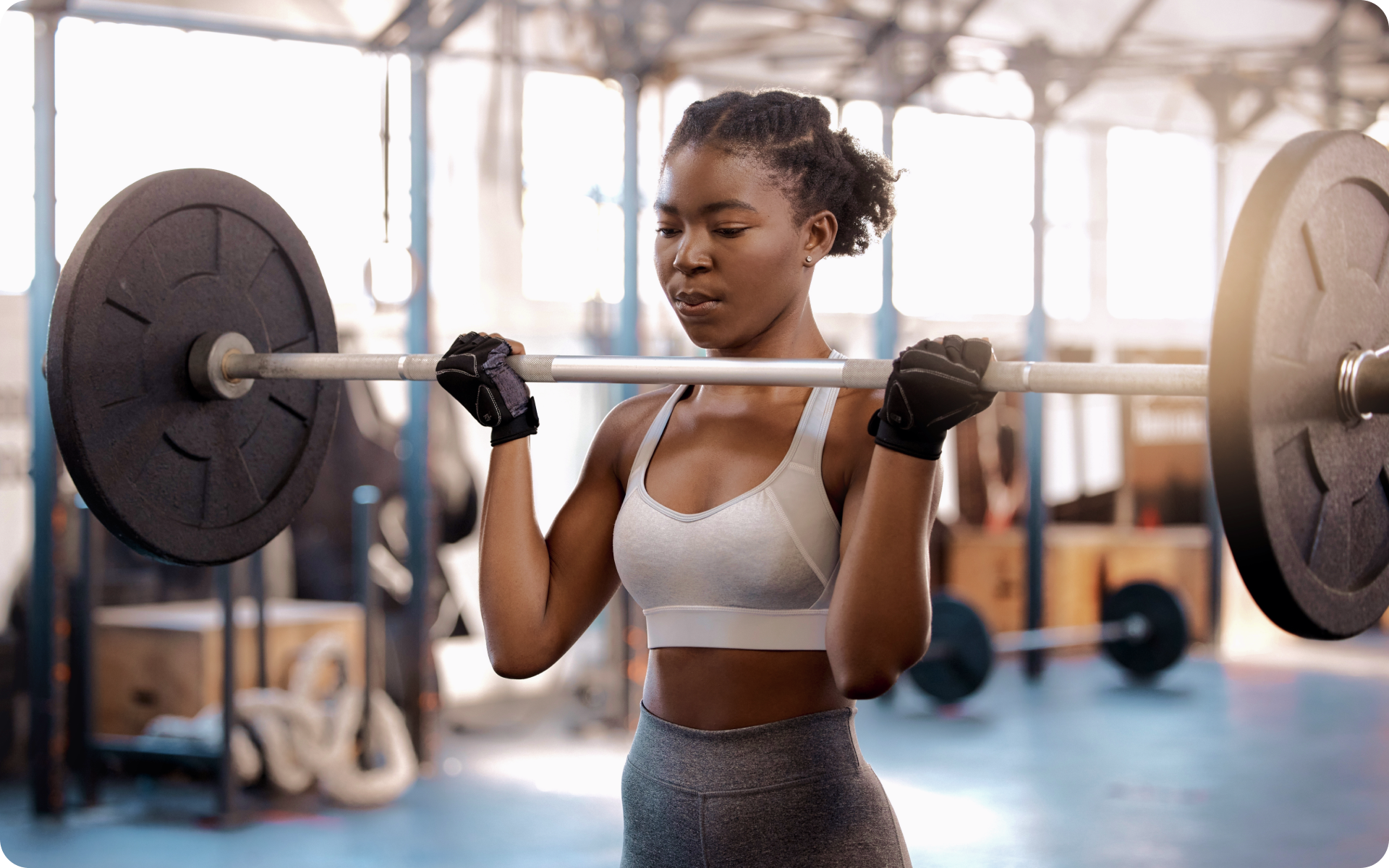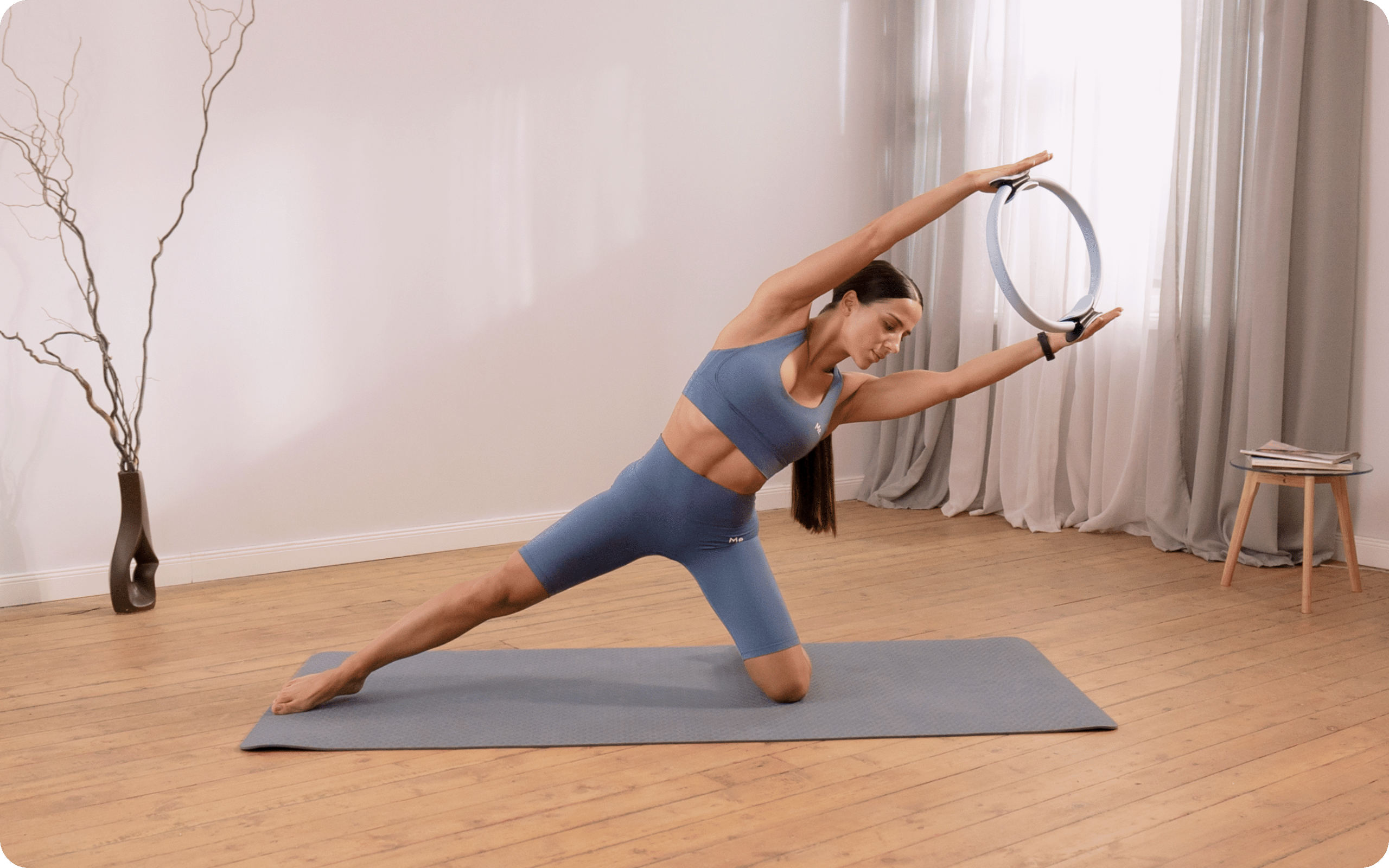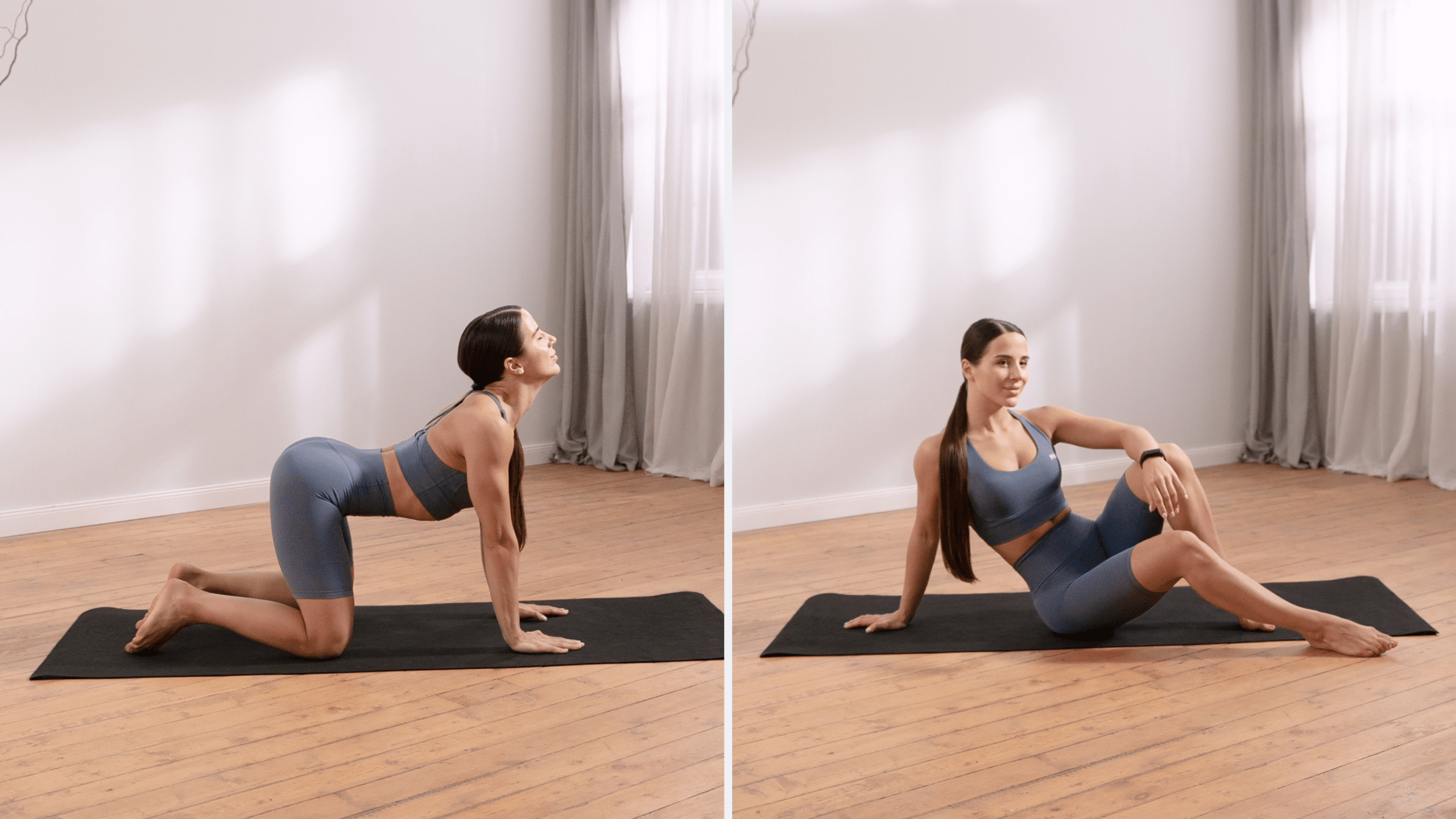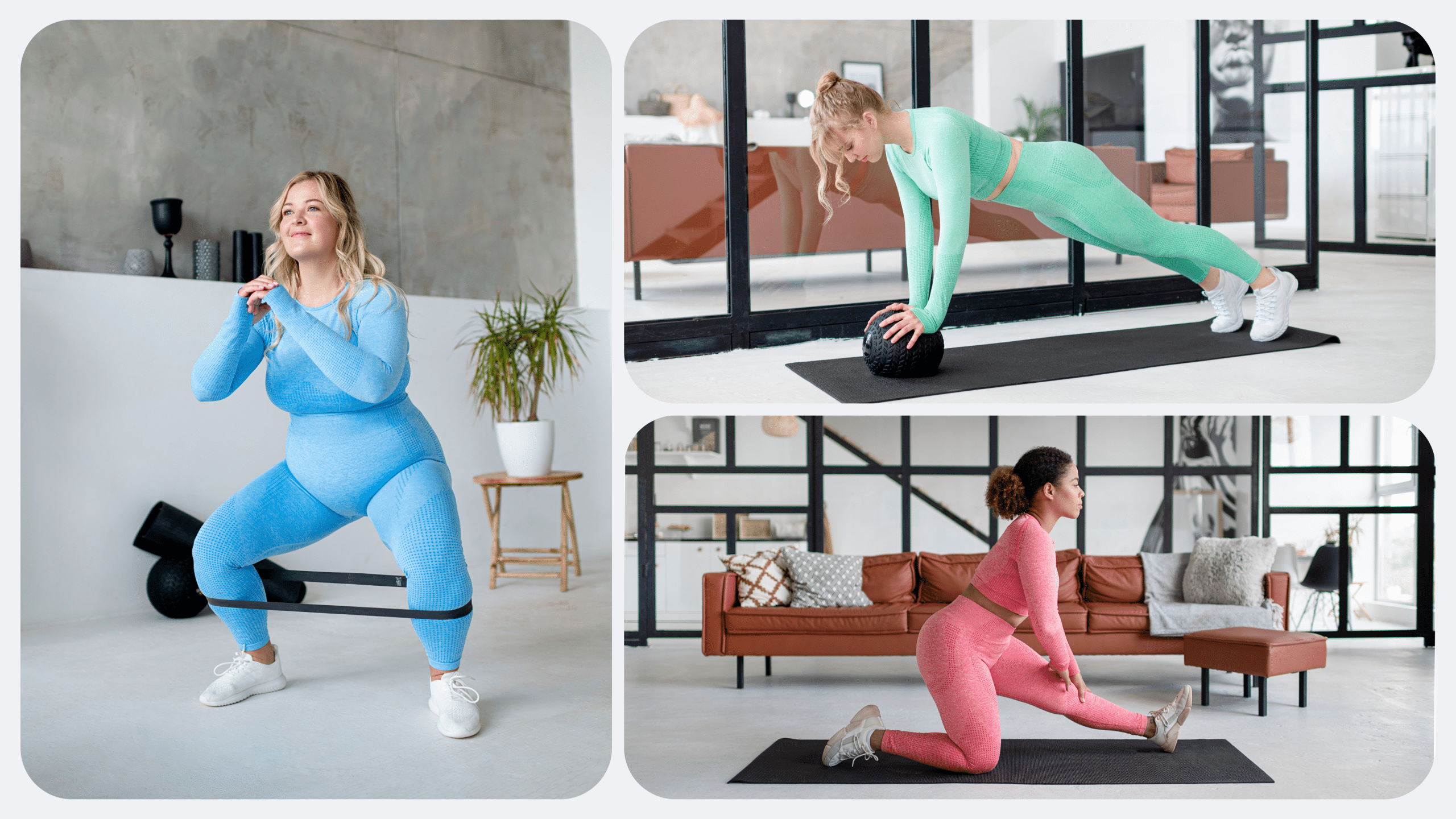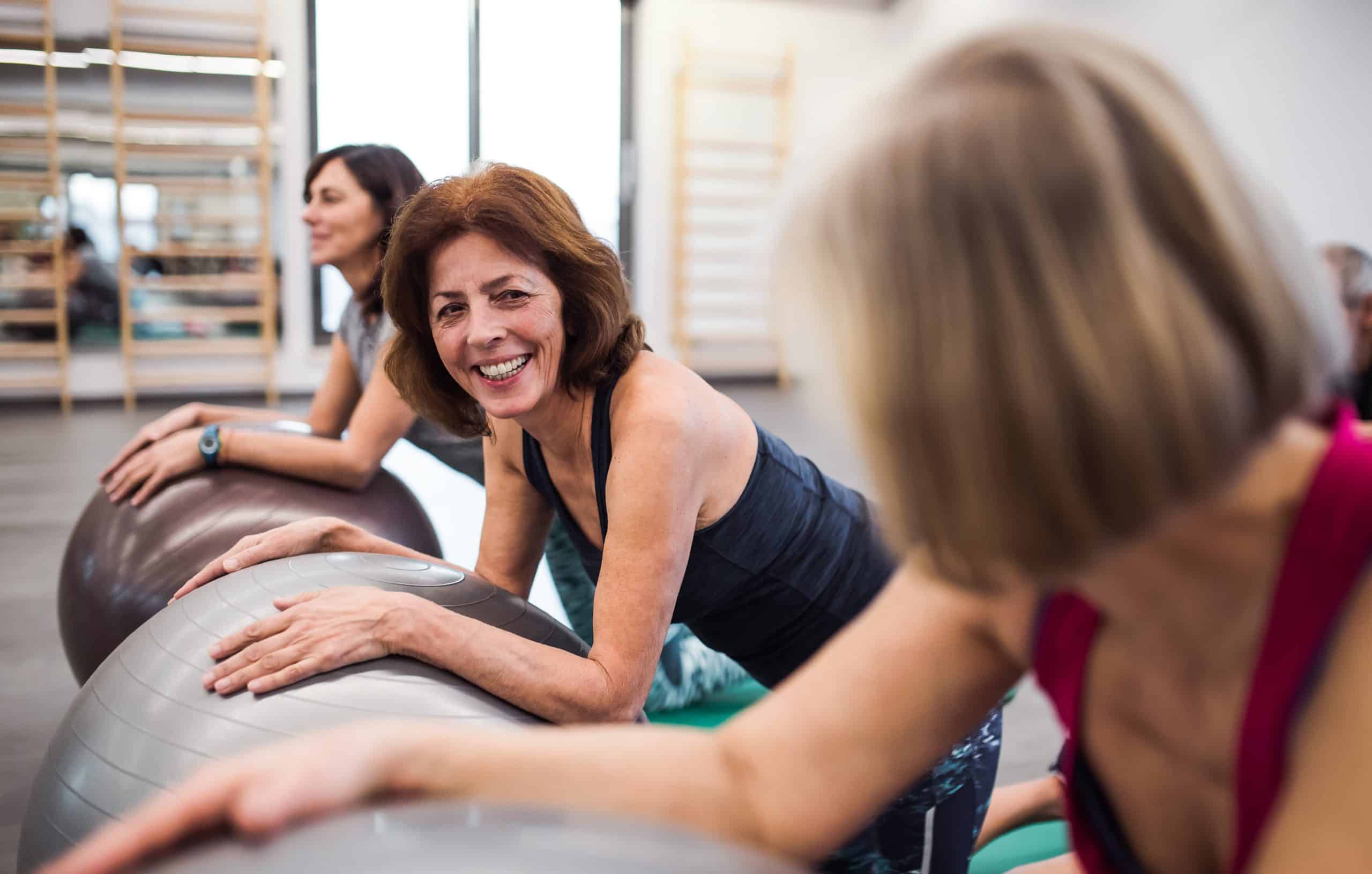When you think of boxing, the first thing that comes to mind is a ring, a bell, and two fighters duking it out. But boxing can be so much more than that. It’s actually an effective workout that everyone can benefit from, even if they’re not gearing up for a competition. Boxing falls under the umbrella of martial arts, a name that encompasses many different fighting styles. It incorporates punches, kicks, and other moves to work out your entire body. Like other full body exercises, it helps build muscle and endurance while also sharpening your reflexes. To get the most out of your boxing workout, you should master the following 10 moves.
Boxing Technique 1: Stance
Stance is the foundation of your boxing workout. It refers to the way you stand and position your feet, legs, hips, and arms in preparation for punches. It’s determined by your offensive or defensive goals and helps you stay balanced while in motion.
Think about it—how can you throw an effective punch if your feet are planted in the wrong spot? Stance is the foundation you’ll build your offense and defense techniques upon.
There are many different stances, but the three most common are the orthodox stance (left foot forward), southpaw stance (right foot forward), and switch stance (interchanging the two). We’ll go into more detail about the stances below.
- Orthodox stance – This is the most popular stance in boxing. It’s characterized by having your left foot and shoulder in front of your right. It is best for straight punches since you should always have your strongest hand in the back to throw the hardest punch.
- Southpaw stance – This stance is the opposite of the orthodox: your right foot and shoulder should be in front of your left. It is best for left-handed punches.
- Switch stance – This stance is characterized by constantly alternating the orthodox and southpaw stances during a fight. It is best when you want to confuse your opponent and make it difficult for them to predict your punches.
At the core of all stances is the traditional boxing stance, which is centered and balanced with equal distance between your feet. This is essential for generating power in your punches and defending against incoming shots.
So, as a beginner, you’ll want to start with the traditional stance, positioning your body as follows:
Feet
Your feet should be slightly wider than shoulder-width apart. This gives you a stable base to move and pivot. Your rear foot should be slightly angled and your toes pointing outward. Lift the heel of your back foot, but leave your leading foot flat on the ground. This allows quicker movement and better balance.
Legs
Your knees should be bent slightly, allowing your hips to sway from side to side. This is important because it helps absorb the shock of incoming punches.
Hips
Your hips should be slightly forward and your upper body leaned back. They should also be parallel to the ground. This is important for transferring your body weight into your punches, giving them more power and speed.
Arms
Your arms should be held close to your body, but not so tight that you can’t move them. Your elbows should be slightly bent and your hands covering your face. Keep your lead hand close to your chin and your rear hand just above it. This will protect you from incoming punches while still being able to throw shots of your own.
Read More: Rowing Vs. Running: What Should You Choose To Reach Your Fitness Goals?
Boxing Technique 2: Attack
Attacking is basically trying to hit your opponent. In boxing, there are five main types of punches: jab, cross, hook, uppercut, and overhead punch. These are the five main punches you’ll need to master in order to be successful in boxing.
Once you become familiar with them, start combining and experimenting with different combinations. This will make it harder for your opponent to predict what kind of punch you’re going to throw next and give you the advantage.
Jab
This is a straight punch that targets your opponent’s face or body. It’s the most basic, but also one of the most important punching techniques in boxing. It’s thrown quickly and used to set up other punches, control distance, and break your opponent’s guard.
Cross
This is a straight punch targeting the body or head of your opponent from the opposite side of your jab. It’s much more powerful than the jab and should be thrown with all your weight behind it for maximum effect. Rotating your shoulders and hips as you throw it will add extra power.
Hook
This is a curved punch targeting the sides of your opponent’s head. Occasionally, the hook can be used to target the body as well. It’s usually used when your opponent is off-balance, making them easier to hit. Keeping your elbow close to your body and drawing a semi-circular motion with your arm will add speed and power to your hook.
Uppercut
This is a downward punch targeting the chin of your opponent. It’s usually used when your opponent’s guard is low, making it easier to hit. You’ll swing your arm in a vertical motion, making sure to keep your elbow close to your body.
The uppercut is a risky punch since it requires you to get close to your opponent, so if you miss, you’ll be open to a counter-attack.
Overhead Punch
This is an upwards punch targeting the head or chin of your opponent. It’s usually used as a finishing move when they are already off balance and vulnerable.
You’ll swing your arm in an upward arc, making sure to keep it close to your body for extra power and speed. This is an equally risky punch to the uppercut, so use with caution.
Boxing Technique 3: Defense
In boxing, defense is as important as attacking. Knowing how to properly defend yourself will give you a great chance of winning the fight without taking too much damage. There are four main defensive techniques in boxing: slipping, blocking/parrying, bobbing and weaving, and clinching.
Slipping
Slipping is when you move your head to the side to avoid an oncoming punch. To do this, you’ll need to shift your bodyweight slightly and turn your shoulders and hips in the direction of the punch to minimize damage. This requires quick reflexes and good timing.
Blocking/Parrying
Blocking is when you use your arms or shoulders to deflect incoming punches. You’ll need to time it perfectly and use the correct technique for maximum effect.
Parrying is a little different from blocking. When parrying, you’ll use your arms to catch or push away the incoming punch without fully stopping it. This will throw off your opponent’s balance and make it easier to counter-attack.
Yanking yourself back in shape has never been so easy with our game-changing fitness app! Start transforming your life with BetterMe!
Bobbing And Weaving
This is when you move your head and body in a rhythmic pattern to avoid incoming punches. You’ll need to be light on your feet and practice this technique regularly for maximum effect. It’s also important to be aware of the angles of attack, so that you can anticipate your opponent’s punches and move accordingly.
Clinch
This is when you grab your opponent’s body to control them or stop their punches. You’ll need to be quick and strong in order to properly execute this technique. Bear in mind that this is a short-term defense strategy as the referee often breaks it up soon after.
It’s also important to remember that clinching is illegal in some boxing competitions, so use it with caution.These are the four main defensive techniques in boxing that can help you stay safe and win fights.
It’s important to practice them regularly so that they become second nature when you’re in a fight. Remember, if you can defend yourself properly, it will give you the confidence to attack more aggressively and put your opponent on the back foot.
Boxing Technique 4: Footwork
Moving while boxing makes you a harder target to hit and adds power and speed to your punches. You need to be able to move in a rhythm, using the right techniques for maximum effect. Here are four techniques you can use to improve your footwork:
Jump Rope
This is when you jump over a rope while performing various boxing drills. This will help you develop coordination, agility, and balance – all important qualities for boxing.
Ladder Drills
This is a drill where you use a ladder to practice various footwork techniques. You can use it to practice quick steps and turns, or even specific boxing moves such as slips or hooks. It’s a great way to develop your coordination and timing for when you’re in the ring.
Shadow Boxing Techniques
This is a great way to practice your footwork and punches without any physical contact. You’ll be able to focus on technique while also improving your stamina and coordination. Focus on keeping your movements light, agile, and rhythmical for maximum effect.
Shadow boxing is literally boxing without a partner, so you can practice any technique you like for as long as you want.
Read More: How To Choose A Sports Band To Amp Up Your Fitness
Boxing Technique 5: Breathwork
At the end of day, boxing is an aerobic exercise and you need to be able to manage your breath effectively. Why? Because during aerobic exercise, your muscles require oxygen to produce energy.
Without proper breath management, your muscles won’t be able to perform properly and you risk running out of energy quickly. It’s important to practice breathing exercises regularly so that you can keep your movements light and agile while boxing. Here are six breathing techniques:
Diaphragmatic Breathing
This is when you use your diaphragm muscles – which are located between your chest and abdomen – to breathe. This type of breathing will help you relax before a fight, as it helps you to remain calm and focused (1). Over time, you’ll be able to control your breathing and maintain a steady rhythm.
Box Breathing
This is when you take deep breaths in and out, using the same amount of time for each breath. This type of breathing will help you keep your focus on the ring and not get distracted by anything else. It’s also great for reducing stress and calming your nerves (2).
Forced Exhalation
This is when you take a deep breath in and then exhale forcefully, pushing out as much air as possible. This type of breathing will help you build up strength during a fight and maintain the right amount of energy for maximum performance.
Full Breath Cycle
This is when you practice taking deep breaths, slowly exhaling, and then repeating the cycle. This will help improve your stamina in the ring and make sure that your muscles have enough oxygen to last through a fight.
Paced Breathing
This technique involves taking a deep breath before throwing a punch, followed by an exhale afterwards. This will help you remain calm and focused during a fight, as well as maximize your oxygen intake.
Interval Breathing
This is when you alternate between shallow and deep breaths. This helps you stay calm and focused while also improving your endurance for long fights. It’s important to practice this technique regularly so you can perform it correctly in the ring.
By mastering your breathwork, you’ll be able to improve your performance in the ring and reduce fatigue during bouts.
If you wish to cinch your waist, tone up your bat wings, blast away the muffin top – our fitness app was created to cater to all your needs! BetterMe won’t give excess weight a chance!
Boxing Technique 6: Signature Style
This technique is for more advanced boxers, as it involves finding your own style. Essentially, a signature style is the combination of techniques and strategies that make you unique in the ring. Figuring out what works best for you can be difficult, so this could take some time to perfect.
There are four main styles of boxing:
The Pure Boxer
A pure boxer is also called an out fighter. That’s because they prefer to stay out of their opponent’s range and use their footwork to move around while waiting to attack. They usually rely on their jabs, crosses, and uppercuts to score points from a distance.
The Slugger
A slugger is also known as an in-fighter because they prefer being close to their opponents. They have a “cruel” fighting style and often attack with powerful hooks and uppercuts. Sluggers also have great hand speed, so they can surprise their opponents with quick combinations. Their goal is to overwhelm their opponents with relentless aggression.
The Boxer-Puncher
A boxer-puncher is a combination of the pure boxer and slugger styles. They are usually well-rounded fighters who have speed and power in their punches, but also use footwork to create distance when needed.
Boxer-punchers often rely on jabs and crosses to score points, but can also throw powerful hooks and uppercuts when needed.
The Swarmer
A swarmer is a fighter who prefers to rush their opponent with combinations. They are known for their relentless aggression, as they often attack from all angles and keep their opponents off balance.
Swarmers usually don’t have great hand speed, but they make up for it by using their whole body to attack.
Why Does Boxing Style Matter?
Your signature style matters because it provides you with an advantage over your opponents. You’ll be able to make intelligent decisions quickly, since you know what works best for you in the ring.
Knowing your own unique boxing style will give you the confidence to perform at a high level and surprise your opponents.
Boxing Technique 7: Creating Angles
Angling is a great way to gain an advantage in the ring. It involves moving your feet and body into positions that create opportunities for you to land punches while avoiding your opponent’s attacks.
This is an important skill because it forces your opponent to adjust their strategy and move out of position, allowing you to score points or even knock them out. To practice angles, you can start by having sparring sessions with a partner.
This will help you get used to the movements and learn how to create angles that work for you. Once you’ve mastered this skill, it will become second nature and you’ll be able to use it in fights without even thinking about it.
Boxing Technique 8: Focus Training
Jack of all trades, master of none. This is something you don’t want to be in the ring. That’s why focus training is so important for boxers. Focus training helps you hone your skills on specific techniques and strategies, allowing you to become an expert in those areas.
But what exactly is focus training? It involves focusing on one technique or strategy at a time and practicing it until you become proficient. For example, if you want to improve your jab, you can practice throwing jabs at a punching bag for an extended period of time.
This will help you build muscle memory and increase your accuracy with the jab.There are two types of focus training, named after the skills they enhance: power and speed training.
In power training, you focus on building strength and power. This can involve lifting weights or doing explosive drills with a partner. The goal is to increase the force of your punches, which will allow you to do more damage when you land them.
Speed training involves quick, precise movements with light punches or focus mitts. This will help you become faster and more accurate in the ring by forcing your muscles to become accustomed to working at a high speed. Improve your reflexes and response time by doing drills with a partner or focus mitts.
Boxing Technique 9: Feints
Feints are an important part of boxing strategy. They involve making a false move that your opponent thinks is an attack, but it actually tricks them into moving in a certain way to set up for an attack.
You can use feints to confuse your opponents and make them think they know what’s coming next, when in reality you are doing something completely different. Jab feints involve throwing a jab without intending to hit, which makes the opponent move out of the way or throw an ineffective punch.
This can open up a window of opportunity for you to score points or even knock them out. Whole body feints involve moving your whole body, usually in a way that looks like an attack but actually isn’t.
This can make your opponents think it’s safe to counterattack and then you can surprise them with a powerful punch. Feints require a lot of practice, but if you master them, they can be an invaluable tool in your arsenal.
Boxing Technique 10: Body Shots
Head shots are powerful, but sometimes it’s better to aim lower. Body shots can be used to weaken your opponent and make them easier to knock out. Body shots can cause a lot of damage and have the potential to end fights quickly.
They involve attacking the stomach and ribs with punches like hooks, uppercuts, or overhangs.The key to throwing effective body shots is aiming for the solar plexus. This is a large nerve cluster in the stomach area that can cause intense pain when hit with a punch.
Body shots are also great because they can be thrown from different angles, making it harder for your opponent to defend them.
The Bottom Line
Boxing is an art form that requires years of practice and dedication to master. It involves a wide range of techniques and strategies, from stances and punches to footwork, defense, and angle manipulation.
These 10 boxing techniques are just the beginning; there are still many other techniques you need to learn in order to become an expert boxer. So take the time to practice and refine these skills, and you’ll be on your way to becoming a pro in no time.
DISCLAIMER:
This article is intended for general informational purposes only and does not serve to address individual circumstances. It is not a substitute for professional advice or help and should not be relied on for making any kind of decision-making. Any action taken as a direct or indirect result of the information in this article is entirely at your own risk and is your sole responsibility.
BetterMe, its content staff, and its medical advisors accept no responsibility for inaccuracies, errors, misstatements, inconsistencies, or omissions and specifically disclaim any liability, loss or risk, personal, professional or otherwise, which may be incurred as a consequence, directly or indirectly, of the use and/or application of any content.
You should always seek the advice of your physician or other qualified health provider with any questions you may have regarding a medical condition or your specific situation. Never disregard professional medical advice or delay seeking it because of BetterMe content. If you suspect or think you may have a medical emergency, call your doctor.
SOURCES:
- Effectiveness of diaphragmatic breathing for reducing physiological and psychological stress in adults: a quantitative systematic review (2019, nih.gov)
- How Box Breathing Can Help You Destress (2021, clevelandclinic.org)
